Nov. 19/12 – Buenos Aires is the capital and the largest city of Argentina and the second-largest metropolitan area in South America, after Greater São Paulo in Brazil. It has a population of 15.2M out of Argentina’s total population of 42M (compared with 34 million in Canada and 4.4 million in BC).
The 13-hour bus ride from Mendoza on “first class seats” to get to Buenos Aires was very comfortable. It cost us $100 instead of $300 on a 90-minute flight. Actually, it was the first night in 2 weeks that I was able to sleep for more than 5 hours straight because the seats were very comfortable compared with the beds in the hostels. These seats recline to completely flat giving the passengers more comfort when sleeping. It’s actually roomier than the business class seats on Cathay Pacific flights to HK. Deon was fascinated that there was even wi-fi on the bus since our deal was that he gets to play on his computer or watch YouTube during travel time without having to use his points. He told me he’d rather be on a 40-hour bus ride than a 12-hour flight now. It’s like heaven for him!!
The first two nights upon arrival in Buenos Aires, we stayed in a boutique B&B advertised on Airbnb in a very nice neighborhood called Palermo for $67/night. It’s like our Yaletown but the architecture here reminds me of Paris. That was the nicest bed I had slept on since we left home over a month ago. It was very quiet there because we were the only guests that I felt kinda isolated. The room was very spacious and clean but unfortunately there was no kitchen that the thought of eating out 3 meals a day for the next 30 days made me decide to find a place that had one – both for health and budget reasons.
It took us a day to start missing chatting with other backpackers and “bad-packers” so I was hostel hunting in the 2 areas I liked which were also close to the tango studio and the Bikram yoga studio. After what I had experienced with hostels in Mendoza, I decided to go and visit these hostels instead of just booking online. I spent $25 on taxi going to see the top 6 ranking hostels I found online after many hours of reading reviews and looking at pictures. I figured that a month is a long time so it’s worth the time to look into them more. OMG! This must be the BEST $25 bucks I had ever spent in South America. The hostels didn’t look anything like what I had seen and read on the internet. Three of them smelled so bad that I wanted to puke. The 4th one was so dirty that I felt I needed to first go and buy myself bed sheets before I’d go to lie down. The 5th one was a boutique hostel which was nicer but it was for $80/night and because of its location, it would cost me another $20 per day to commute back and forth to my tango school. Can’t justify $3000 a month in rent and taxi alone. I ended up booking in the last hostel which is old and not so pretty but it didn’t stink at all and the bed sheets were clean. LOL. Oh, by the way, this hostel was the last on my list using the internet ratings as bases, therefore if I hadn’t physically go and check it out, then I would not have decided on this one.
After we had settled in our room and while Deon was sitting on his upper bunk bed, I asked him what he thought of that hostel. He said while staring at the 3 broken drawers on the bottom of the dresser, “Well, it’s rustic and it has an “urban feel” but it’s nice.” Haha. I couldn’t stop laughing. I guessed that he had remembered that “urban feel” was the word Mark used as the positive way to describe the old, damaged and ugly ping pong gym with the ripped sofa seats when we were in Xian last year!!
My experience here teaches me the uniqueness of culture even more. Each culture has its own way of doing things that fit into the whole picture of their life; no culture is right or wrong anyway. People in HK and Vancouver move faster because way of life is faster. On the other hand, people in SA move slower because pacing of life is slower. For example, cueing in the express lane in the supermarket takes only about 5mins max with 4 shoppers ahead of me, each with fewer than 10 items. Here, that takes 20mins. South Americans don’t complain though because that’s the way it is. Being immersed on another culture really teaches you a lot. Sometimes, it makes you appreciate whatever you have and sometimes it makes you think that what you have could be different.
We stayed in Buenos Aires for 31 days total.
On a related topic, this month reconfirms that I actually prefer long term stay in a new place than the “hit and run” kind of trip which doesn’t seem to go well with a traditional backpacker lifestyle. But that’s OK because I had already decided that I would be creating my own style instead of following everyone else’s since every one has different preferences anyway. I think the reason is that I don’t like to live off a luggage for too long. On top of this, I do not achieve a sense of belonging when I stay for only a few days. Plus I don’t really get to know the true local culture outside of what media write for tourists.
The highlight for Buenos Aires was of course the “Argentina Tango” since this is the birth city of this dance. I was so surprised to learn that while there are only 5 salsa clubs, there are around 250 milongos (tango clubs) in Buenos Aires in total. Obviously, not all are open every night but still, that’s something. Unlike the Spanish language, I find the tango a lot easier to learn. I began to like this dance after I had my first private lesson. However, I stopped after I got to intermediate level because I felt I’d rather invest the energy and time to enjoy dancing than learning more at this time. I figured that I can always go back to it if and when I find a compatible dance partner to learn more from. And I also gave up learning Spanish after I was told that there are 16 tenses!
I was so surprised to still be able to remain within the $100/day budget in Buenos Aires since this city cost more to live in than in Mendoza. How did I do it? Well, it’s because I was able to negotiate for a 40% discount in a private room in the hostel which meant $27/night for both of us. I bought grocery and cooked in half the time. But most importantly, I went to Uruguay and got USD cash from the ATM there then came back and had it changed to the local currency in the black market and got 35% more. So, while still living on a budget, I was able to go out and do some shopping when I had gotten bored of seeing ourselves in the same clothes in the photos. No “brand names,” though. Lol
I was told that Buenos Aires is the city with the biggest chance for me to bump into my Mr. Right. But after spending a month here, I don’t think this statement could ever be true because I find the men here far too chauvinistic and egoistic for my liking. On top of this, we don’t seem to share the value of TIME and MONOGAMY. These perceptions were strengthened after talking to dozens of locals about the culture here. It appears that monogamy is not a high value for many in Buenos Aires which explains why there is no shortage of attention from the men I encountered here, married ones included. It took me 2 weeks to understand the rumor that Argentineans have high ego. I can now even relate to why “male chauvinist with high ego” would be true as well. It’s like regardless of how clearly I state my values and boundaries, they don’t matter to them. All they know is what they want and they think that that is all what matters. Talk about being persistent, eh? When I asked my local male friends why men were so persistent here, they said that it’s because the local women trained them to be that way since these women often like to say NO at first to test and see how persistent they can get. Women here likes to play “mind games” a lot. Wow!!
I was also warned by the people in Mendoza that the people in Buenos Aires are very stuck up and unfriendly. But, like in any other big cities, there are always nice and not so nice people. The most unfriendly ones we encountered were the bus drivers. But the truth is that I bumped into a lot nice than the not so nice people for the month I was here. I was surprised with the extra mile the local people went to give me directions around this big city even when we couldn’t really communicate. I was very impressed to see how courteous the people on the bus and subways were to give up their seats to mothers with children and to senior people. I am especially happy to have found some very nice friends like Stephan, Jamie, Roxanne, Hernan, and Francisco with whom I plan to stay in touch even after I leave.
During my stay here, I realized why people call Buenos Aires as the “city that doesn’t sleep.” Many restaurants don’t open till 8pm for dinner. And people eat very late here and they don’t start partying at clubs till after midnight, all the way till 5am.
We are excited to go and see the Iguázu Falls now. We will stay on the Argentina side for 2 nights and in the Brazilian side for 1 night.
The following are the places that we went to during our stay in Buenos Aires:
The Recoleta Cemetery is located in the area known as the Recoleta neighbourhood. It used to be the garden in the convent of the Order of the Recoletos but was converted into a cemetery sometime in 1822 when the convent was closed. Intricately designed with neoclassical gates, elaborate marble mausoleums, the Cemetery boasts of different kinds of architectural designs of tombs, like Baroque and Neo-gothic.
Apart from its architectural design, the Recoleta Cemetery is made more famous because it is the final resting place of Argentina’s notable personalities like Eva Peron whose life the movie Evita was based on, presidents, artists, writers and many more.
It is one of the “must see” places when one visits Buenos Aires.
Recoleta – one of the most elegant neighborhoods in Buenos Aires is a high class residential and commercial district known as the Little Paris of Buenos Aires. Its French style residences, large gardens, squares, fashionable hotels, museums as well as the restaurants and cafes give this area its distinctive ambiance.
San Telmo – is the oldest neighborhood of Buenos Aires, Argentina. It is a well-preserved area of the Argentine metropolis and is characterized by its colonial buildings.
Tourists are attracted to San Telmo by its architecture, antique shops, restaurants, pubs, art galleries, and tango dance studios.
Tigre – is a town 28km north of Buenos Aires City. The area’s name derives from “tigres” or jaquars that were occasionally hunted there in the early years. The area was first settled in by the Europeans who came to farm the land, to develop the port to serve the Delta and to bring fruit and wood from the Delta and ports upstreams of the Paraná river.
Tigre is a popular weekend getaway for Buenos Aires locals. This city offers lush scenery, a relaxing atmosphere and boat rides. This town sits on an island created by several small streams and rivers and was founded in 1820 after floods destroyed other settlements in the area, then known as the Partido de las Conchas.
We went there for a day trip, a 60-min train ride in an air conditioned train which was nice. We ate the famous Argentinean beef for lunch. But I enjoyed my long conversation with my new local friend, Hernan, more than the steak. I learned so much about the Argentinean culture from him. Then, we took the hour ferry tour before coming back to Buenos Aires. This time the 2-hour ride in a non-air conditioned bus wasn’t pleasant at all: was 35 degrees. We didn’t have to suffer this discomfort if the train we were supposed to take did not break down in the afternoon.
Palermo Lakes in Buenos Aires – is a huge park that is only 5 minutes from our hostel. We loved it here. Actually, we prefer to come here in our spare time than to go and visit museums. Thanks to Stephan, this is where Deon learned to ride the bike without training wheels. I told Deon that if he could ride the bike well, then that will lower our risk of “immigrating to heavens” when we ride on the “death road” in Bolivia next month. Hahaha.
Before getting here, Neil suggested that I do some “people watching” on the Buenos Aires sidewalk cafes since I was way too busy in Vancouver to have time for things like that. So instead of doing it in the cafes, I did it here while waiting for Deon as he practiced biking. It’s quite a cool experience to try and imagine what’s going on with the people around me. I was amazed by how fast an hour went by just while watching people biking, walking, running, laughing, roller blading, boating, chatting, playing volleyball, etc etc…. 🙂
La Boca is one of Buenos Aires’ most colorful districts with Italian immigrants as its first settlers. Today, the buildings here are painted in bright colors. There are many tango dancers performing in the restaurants along the famous pedestrian street called La Caminito. There are also many local artists selling their wares. I was told that this is one of the MUST SEE areas in Buenos Aires for tourists.
The Japanese Garden – is a 2 hectare garden in the Palermo area of Buenos Aires. This was donated to the city by the Japanese community in Buenos Aires in 1979 in time for the State visit by Japan’s Imperial Family. It contains all the features of a traditional Japanese garden, including waterfalls, bridges, streams, tea house and over 600 koi carp in the lakes. This garden is part of the most beautiful parks in the city. To date and even after more than a decade since the donation was made, the Japanese Government continues to help to take care of the property, a symbol of the great and everlasting friendship between Argentina and Japan…
Originally posted on Amy’s travel blog: TravelwithAmy.ca




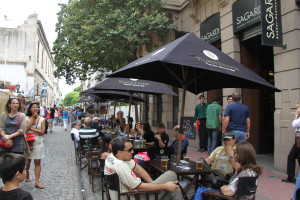
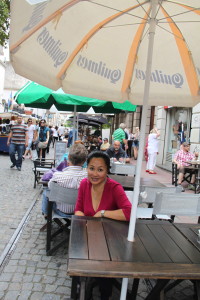
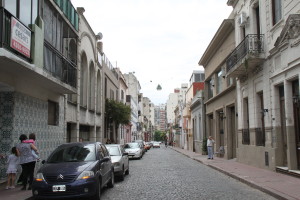

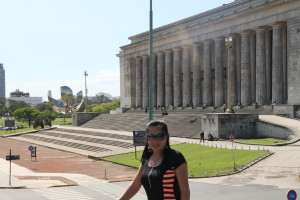



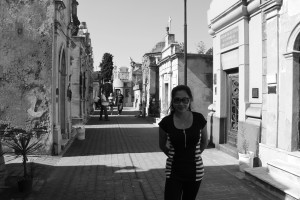
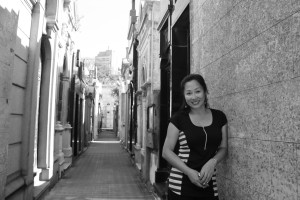
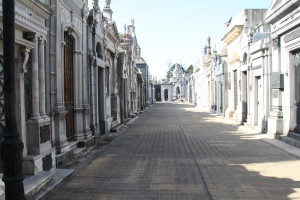
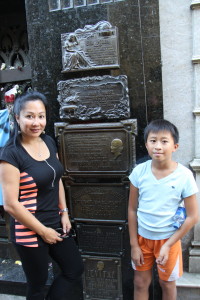
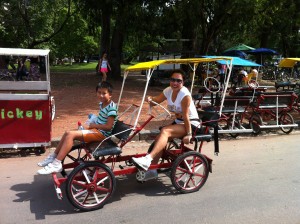
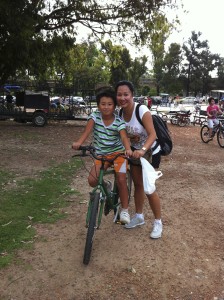
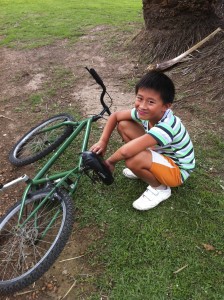
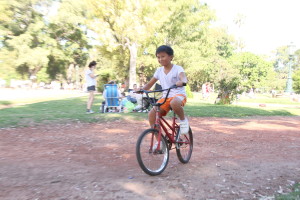


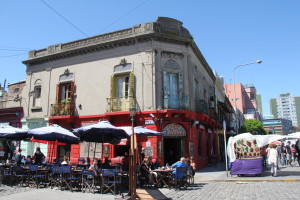
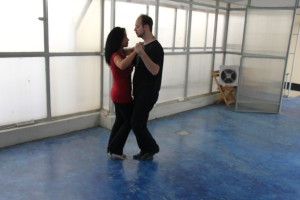
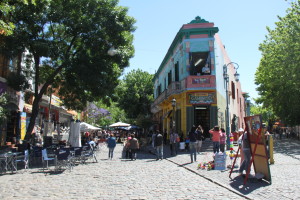
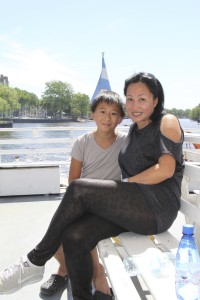
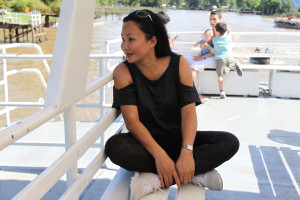


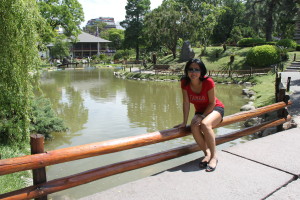

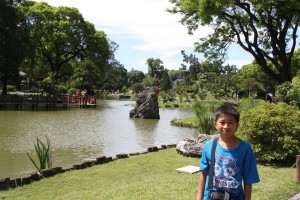

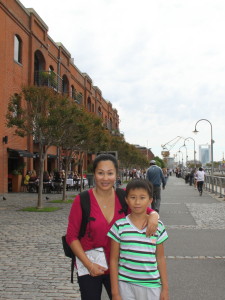
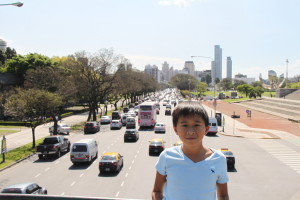

I love what you guys are usually up to. Keep up the superb work!
Thanks a lot! Traveling is always in the plan.
Awesome article.
Thank you very much.
Keep on writing, great job!
Yes, Henry. Definitely. Writing is now part of daily life.